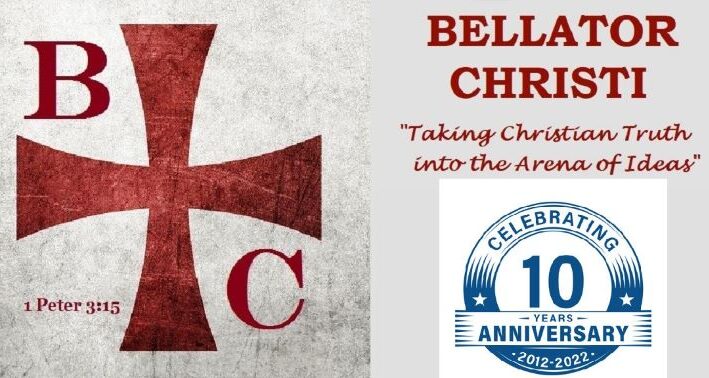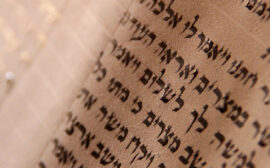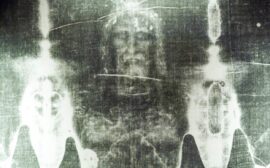By: Brian G. Chilton | February 12, 2018
We live in a day called the information age. This is a time when we are inundated with information. Some information is based on truth, whereas other truth claims are flawed. While it is not a popular assumption to hold: Not every opinion is correct. Not every worldview is truthful. So, how does one know whether a claim is truthful or flawed? You could take detailed courses in logic, which is advised if you are able to do so. However, a few simple tools in your tool belt will help you decipher truth claims. This article will focus on two: the laws of logic and testing truth claims.
1. Know the Essential Laws of Logic
First, it is important for you to know the essential laws of logic. Let’s focus on five of the more important laws.
Law of Identity: (A = A). The law of identity simply states that something is what it is. Douglas Groothuis compares this to a person saying to another, “You aren’t acting like yourself today.” The person infers the identity of the individual as a particular thing.[1] The claim “An oak is a tree” infers that oaks are identified as trees.
Law of Noncontradiction: (A ≠~A). The law of noncontradiction states that nothing can be what it is not. That is, an oak cannot be a tree and cow’s milk. Either it is a tree, or it is cow’s milk. Thus, a thing cannot be what it is at the same time being what it is not.
Law of Excluded Middle: (A V ~A). The law of excluded middle shows that a claim must either be the thing it claims to be or not. It cannot be both. An oak cannot be milk. Therefore, if a person needs shade in the summer, then the person must decide whether the shade from the oak’s leaves will be beneficial or milk. Since milk does not provide shade, the person must choose the oak. But, perhaps the milk would provide a refreshing beverage, but it cannot be chosen to provide shade.
Law of Bivalence: (A⊕~A)=(A V ~A).[2] The law of bivalence simply notes that one must choose between proposition A or proposition ~A. That is, every truth claim is either true or false. It can’t be both. Therefore, one must choose.
Law of Rational Inference: (A = B, and B = C, then A = C). Coinciding with the previous four, the law of rational inference may be helpful in deciphering truth claims. In this sense, if A is shown to equal B, and B equals C, then naturally it follows that A would equal C. For example, if my son’s father’s name is Brian, and I am my son’s father, then it logically follows that I am Brian, my son’s father.
2. Know How to Test Truth Claims
A syllogism is a logical construct that has two criteria and one conclusion. The kalam cosmological argument is a syllogism. It has two premises and one conclusion. The argument goes as follows: 1) Everything that begins to exist has a cause. 2) The universe had a beginning. 3) Therefore, the universe has a cause. How does one test such arguments such as theses? Simply follow three steps.
- Define the terms. Terms will either be clear or unclear. Are the terms that used clear? In the case of the kalam, they are. The term universe refers to the material cosmos. Beginning refers to the origin or starting point of a thing. Cause references the reason for something’s existence. In the case of the kalam, the terms are clear.
- Test the premises. Premises, or statements, are either true or false. Do things that begin to exist have a cause? Certainly! Homes have a reason for their existence, to provide shelter. The second statement is also true. It is nearly unanimously agreed that the universe had a beginning, a starting point. Both premises in the kalam are true.
- Evaluate the argument.[3] Arguments are either valid or invalid. If the first statement is true, “Everything that begins to exist has a cause,” and the second statement is also true in that “The universe had a beginning,” then the argument naturally flows to its conclusion that “The universe has a cause.” That Cause can be inferred to be the Creator. The kalam cosmological arguments passes the truth test.
Conclusion
The tools given in this article do not only apply to syllogisms, they apply to any truth claim. The fact is that not everything you hear from others, read online and in the newspapers, or see on television is based on truth. Use these tools and you will have, what I call, an instant bologna tester. You will be able to decipher truth from fiction. As wonderful as it is to proclaim, Christianity gloriously holds to the test of truth. That being said, the Christian should strive to find the truth, because the “truth will set you free” (Jn. 8:32, CSB).
About the Author
 Brian G. Chilton is the founder of BellatorChristi.com and is the host of The Bellator Christi Podcast. He received his Master of Divinity in Theology from Liberty University (with high distinction); his Bachelor of Science in Religious Studies and Philosophy from Gardner-Webb University (with honors); and received certification in Christian Apologetics from Biola University. Brian is currently in the Ph.D. program in Theology and Apologetics at Liberty University. Brian is full member of the International Society of Christian Apologetics and the Christian Apologetics Alliance. Brian has been in the ministry for over 15 years and serves as the pastor of Huntsville Baptist Church in Yadkinville, North Carolina.
Brian G. Chilton is the founder of BellatorChristi.com and is the host of The Bellator Christi Podcast. He received his Master of Divinity in Theology from Liberty University (with high distinction); his Bachelor of Science in Religious Studies and Philosophy from Gardner-Webb University (with honors); and received certification in Christian Apologetics from Biola University. Brian is currently in the Ph.D. program in Theology and Apologetics at Liberty University. Brian is full member of the International Society of Christian Apologetics and the Christian Apologetics Alliance. Brian has been in the ministry for over 15 years and serves as the pastor of Huntsville Baptist Church in Yadkinville, North Carolina.
Notes
[1] Douglas Groothuis, Christian Apologetics: A Comprehensive Case for Biblical Faith (Downers Grove: IVP Academic, 2011), 48.
[2] The ⊕ symbol refers to exclusive or propositions. In this case, one is forced to choose between A or ~A because both cannot be true.
[3] For further details, see Peter Kreeft, Socratic Logic (South Bend, IN: St. Augustine’s, 2014), 26-27.
© 2018. BellatorChristi.com.






[…] Read more: https://bellatorchristi.com/2018/02/12/simple-tools-to-test-truth-claims/ […]